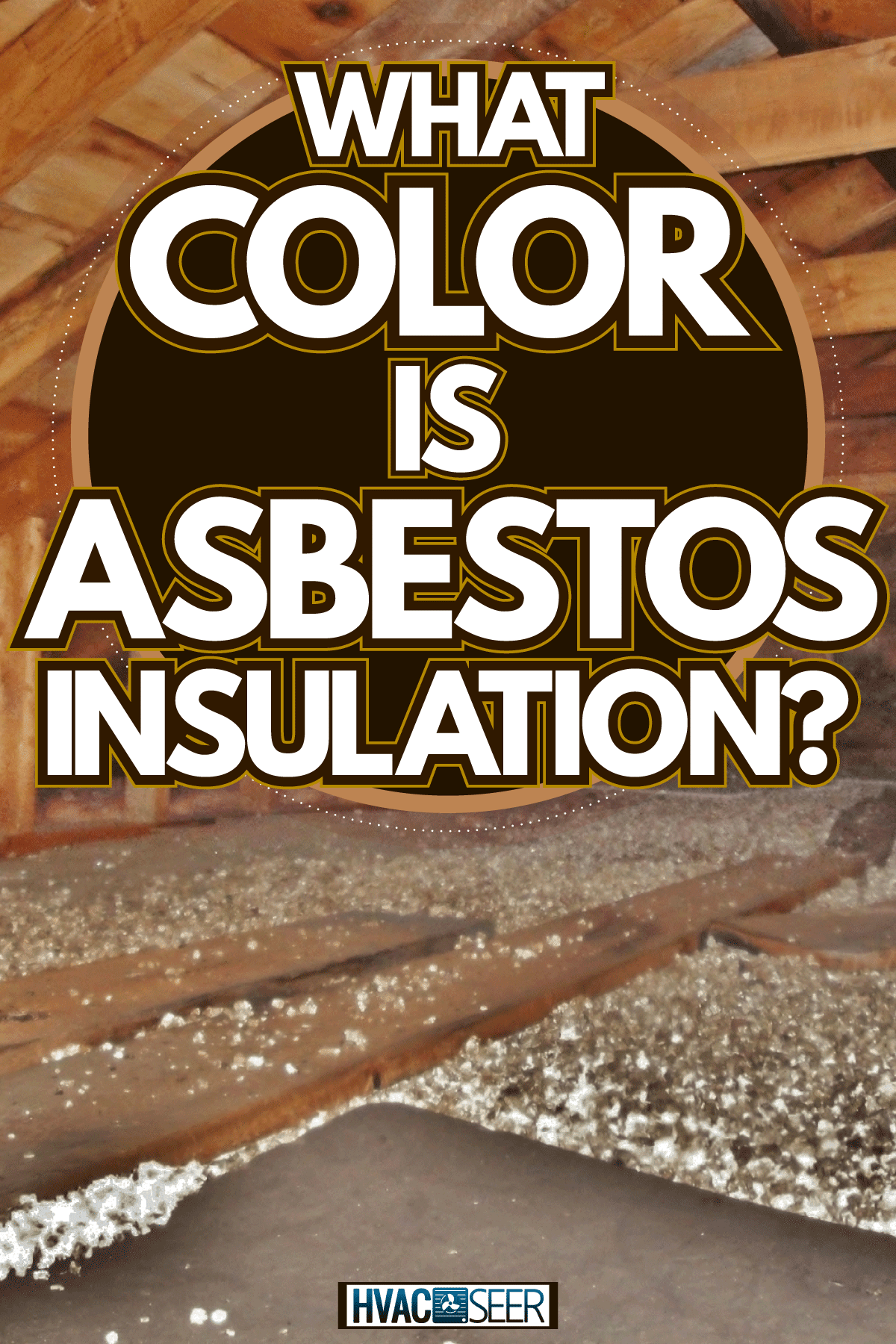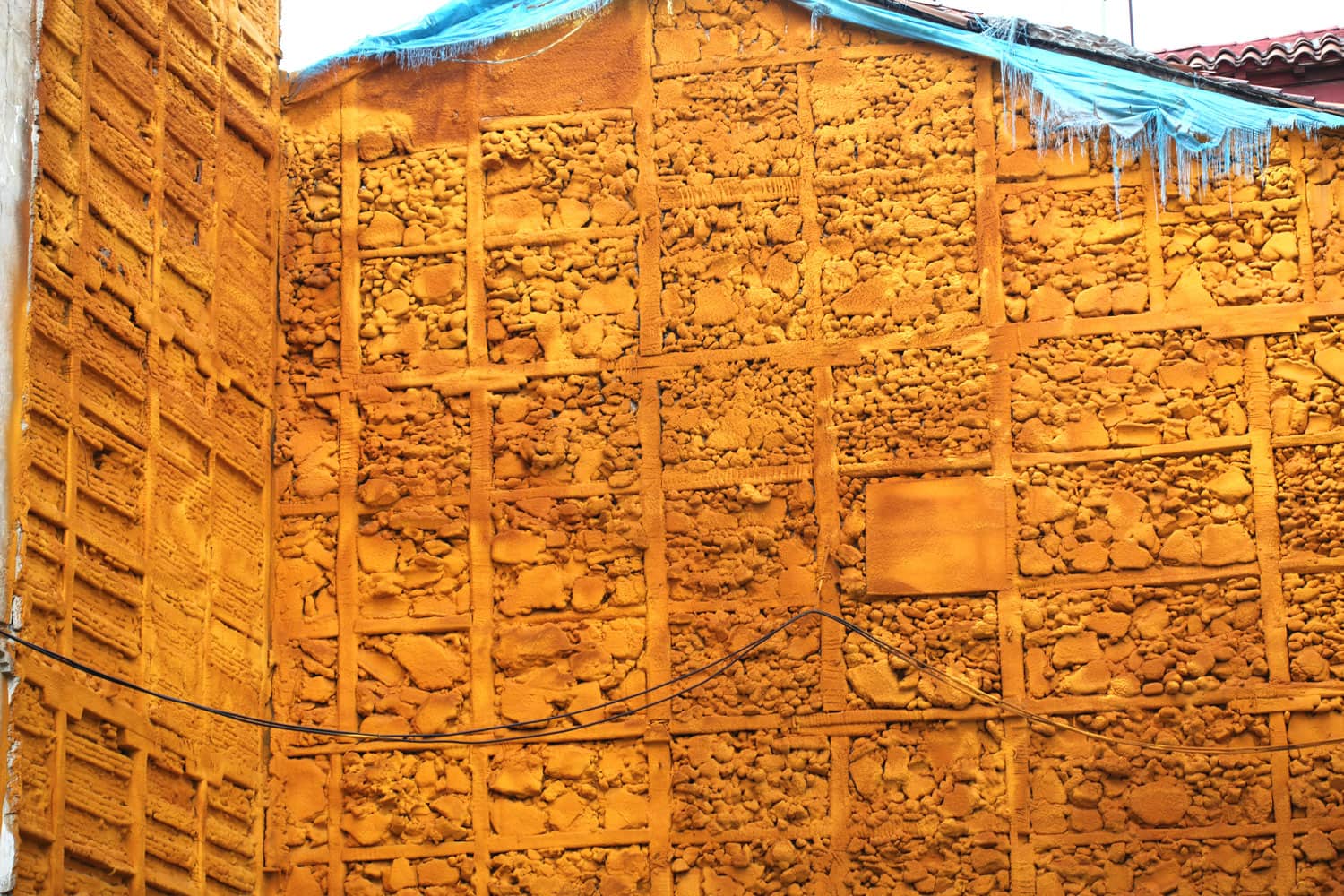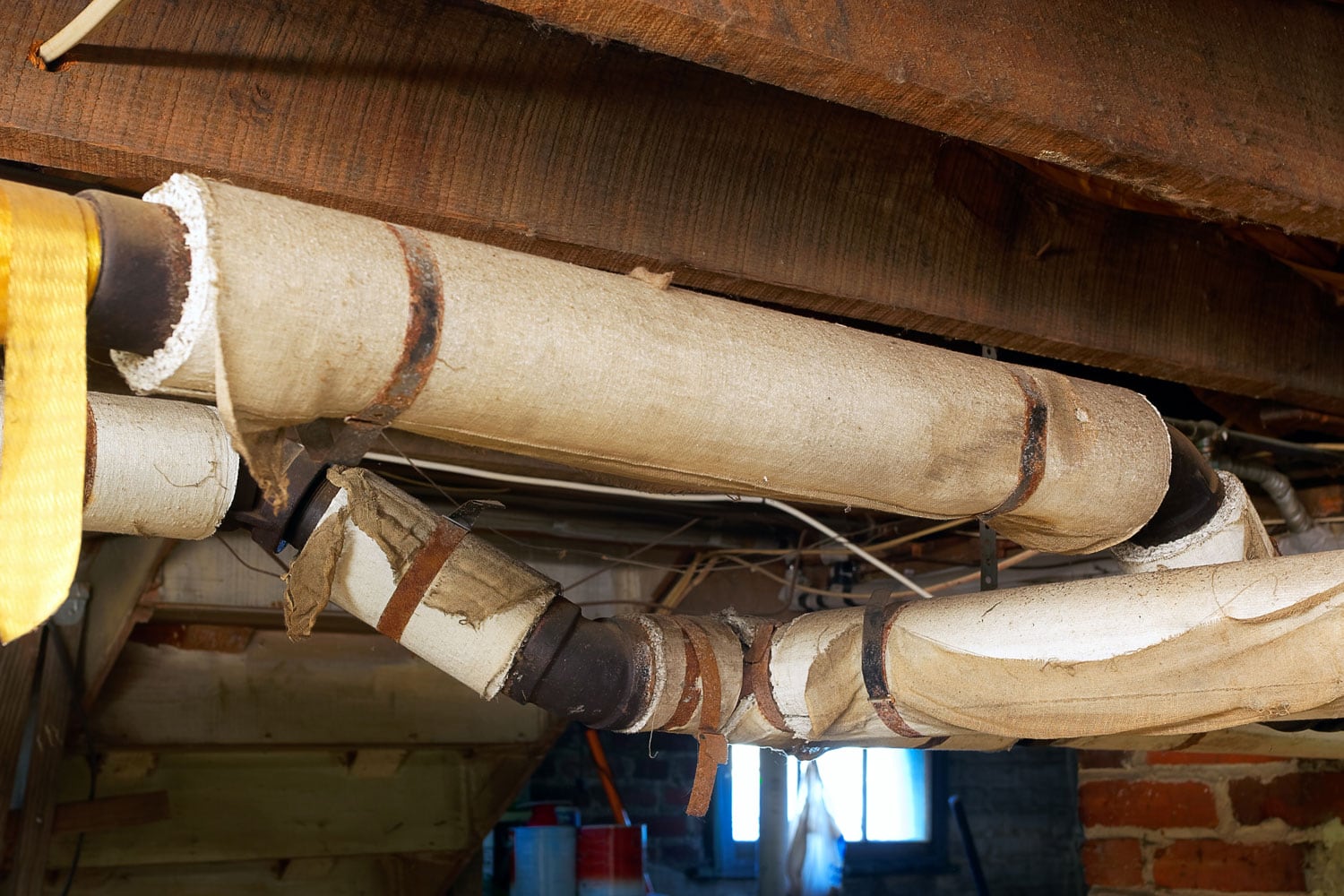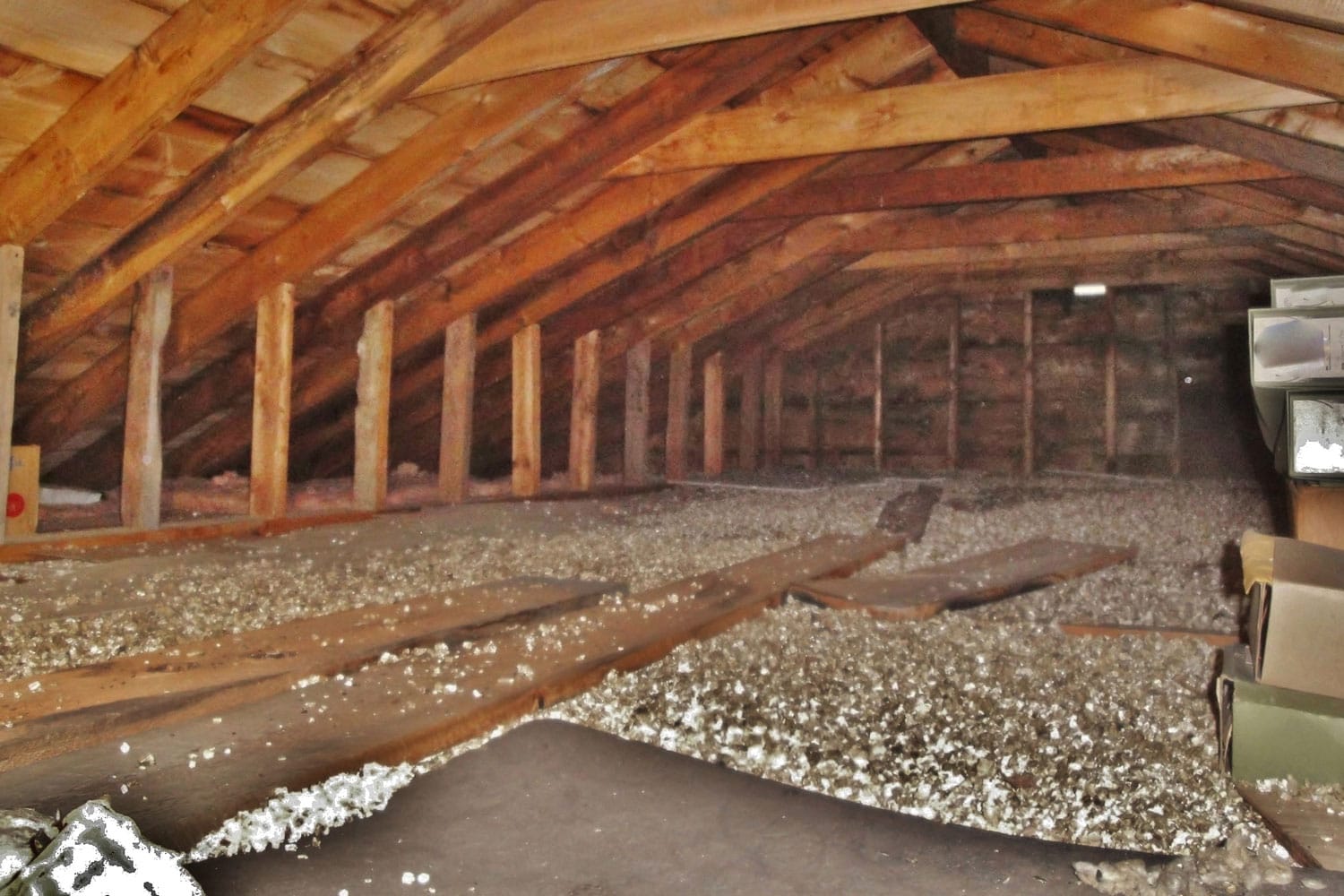For decades, asbestos has been used to support insulation. If you know your way around insulation materials, you must have heard that asbestos was the most common insulation material when discovered. Before it was banned, asbestos was used in wall, attic, pipe, and vermiculate insulations. However, asbestos exposure can be dangerous. So, can you identify it by its color? We reviewed things about asbestos insulation, and here's what we found.
Wall and attic asbestos insulations typically appear white and blue-grey. Asbestos pipe insulation is usually used as a wrap or sprayed. Wraps tend to look like corrugated paper; however, they can be difficult to spot because they have been painted over or concealed in some other way. Vermiculite insulation looks like pebbles and is usually grayish-brown or silvery-gold in color.
You could be thinking, what dangers do asbestos insulations present, and why is it dangerous to use in your projects? How do you spot this material? And are there ways to eliminate it? Read on to learn more about asbestos insulation.
 What Is Asbestos?
What Is Asbestos?
Asbestos is a silica mineral having fibrous strands that can be woven into fabrics and utilized in fire-resistant and insulating products.
Where Can You Find Asbestos Insulation In Your Home?
In older homes, asbestos insulation is common. It is typically found in the home's less prominent areas, such as the following:
- Attics
- Basements
- Crawl spaces
- Closets
- Walls
- Floors
- Ceilings
What Are The Types Of Asbestos Insulation?
For many years, asbestos was a popular choice for many types of insulation due to its natural fire resistance and low cost. Loose-fill, wrap, block, and spray-on are the four basic types of asbestos-containing thermal insulation.
Loose-Fill Asbestos Insulation
Sometimes called asbestos attic insulation, this type is designed to be poured onto attic floors or blown into voids in walls and other structures.

It has a fluffy look and a white to blue-grey color range. Because this type of insulation is not compacted, there is a high risk of inhaling it if it is disturbed.
Vermiculite Insulation
Vermiculite is another type of loose-fill insulation that might expose you to asbestos. While it does not pose the same health risks as asbestos, much of the Vermiculite used before 1990 came from mines that also contained asbestos.
Asbestos Block Insulation
Asbestos block insulations are blocks or slabs of insulation materials inserted or sandwiched in between walls.

Previously, when sawed or fractured, these insulation blocks or boards were frequently made of almost pure asbestos, offering a serious danger of exposure.
Asbestos Blanket Insulation
This type of asbestos insulation typically appears in the form of wraps and spray coatings. These are usually used to cover pipes.

If this type of insulation is damaged or taken off to be replaced, it will crumble and release enormous amounts of asbestos dust.
Spray-On Asbestos Insulation
Spray-on insulation was developed to reduce the time it takes to insulate and fireproof ceilings, walls, and structural beams. Many large commercial buildings have spray-on insulation with a thick layer of grey material applied to the ceiling.

Unfortunately, up to 85% of spray-on insulating products included asbestos. Furthermore, these materials are quickly damaged, releasing a cloud of asbestos fibers into the atmosphere. Unless they are completely encased, they pose a significant risk of exposure.
Why Is Asbestos Insulation Dangerous?
Because asbestos may break down into microscopically thin threads, it is extremely harmful. Because these threads are so minute, they can float around for days after being disturbed.
Individuals can breathe these fibers in while they are in the air. Because the fibers are so small, they can penetrate deeply into a person's lungs and lodge in the lung tissue.
What Health Risks Does Asbestos Insulation Pose?
Asbestos-related diseases including asbestosis and mesothelioma arise when minute asbestos fibers present in asbestos insulation are inhaled or eaten and therefore amass in the body.
Aside from these, persons exposed to asbestos may also suffer from lung cancer, laryngeal cancer, ovarian cancer, and pleural plaques.
How Much Asbestos Exposure Is Bad For You?
The majority of people who develop asbestos-related ailments have been exposed to asbestos for years at work. About 20% of asbestos workers who are significantly exposed get a linked illness.
Nonetheless, substantial short-term asbestos exposure has been linked to disease. "No evidence of a threshold or safe level of exposure has been established," according to a National Institute for Occupational Safety and Health report on asbestos.
How To Identify If You Have Asbestos In Your Insulation?
Identifying asbestos correctly and restricting its ability to become airborne can help you avoid major health concerns in the future.
As a result, asbestos insulation should be carefully detected and removed from your home in a safe manner. But how can you tell if your home has asbestos insulation?
These are the things you need to do to identify if you are using asbestos insulation unknowingly:
1. Find Out How Old Your House Is
If your house was built or remodeled before the 1980s, asbestos insulation is very certainly present.
For much of the twentieth century, most insulating materials had a 15% or more asbestos content. Several products are almost entirely constructed of friable asbestos, which can easily discharge dust into the environment.
2. Look For Existing Insulations At Home
Asbestos-containing batt insulation and loose asbestos-containing insulation are both gray-colored materials with a fluffy appearance. They should be easy to distinguish.
3. Examine Your Pipe Covers
For old houses, most piping use blanket-type and cardboard coverings that are usually used as insulation for pipes and might contain asbestos as well.
However, if you plan on inspecting your home's insulation on your own, make sure you have the right safety equipment, such as goggles, a mask, gloves, and a protective suit. It is much better to hire professionals to do this for you.
What To Do If You Have Asbestos Insulation In Your Home?
Without the assistance of a certified asbestos abatement company, you should never attempt to handle or dispose of asbestos insulation. These materials are exceedingly fragile and will expose you to asbestos if you touch them.
Remember, if you don't hire a licensed business to remove and dispose of asbestos professionally and safely, you could face significant fines.
Here are some tips for the safe removal of asbestos:
- Before paying the final bill, you should get a disposal manifest to ensure that the waste will be disposed of in an asbestos-accepting landfill.
- As mentioned above, only state-licensed asbestos abatement companies should repair and remove asbestos-containing materials. It's a good idea to request references and a list of similar work that the contractor has recently accomplished, as you would with any contractor.
- Check with the local regulating authority of worker safety to see whether the company has had any safety violations.
- Insist on the contractor using the correct tools for the project, as well as workers wearing the approved and proper protective gear.
- You should also make sure that the contractor is covered by general liability and workman's compensation insurance for this type of work. Contractors are obliged by law in several areas to notify federal, state, and municipal agencies before beginning abatement work.
- Before the contractor removes its containment system after the operation, the industrial hygiene professional who initially assessed the property should return to take air samples to ensure that no asbestos fibers have mistakenly escaped.
What Are Other Insulation Alternatives That Are Asbestos-Free?
Fortunately, there are other alternative insulation materials since asbestos is banned. Nowadays, environmentally friendly loose-fill insulation materials are available such as cellulose, fiberglass, and mineral wool insulation.
In Closing

Asbestos insulation still exists to this day. Fortunately, you can check your home if it was insulated with asbestos-containing material by visually inspecting your home insulation. If your insulation appears to be white, blue-grey, grayish-brown, or silvery-gold in color, then you can suspect that it contains asbestos.
In addition, checking the year your house was built, checking existing home insulation, and examining pipe covers will help you identify if your home has asbestos-containing insulation materials.
However, you have to be extra careful not to directly come in contact with it. Being exposed to asbestos, even if it's a short period, can put your health at risk. Some of the diseases induced by asbestos exposure include mesothelioma, asbestosis, laryngeal cancer, lung cancer, ovarian cancer, and pleural plaques.
To ensure the safe removal of asbestos insulation, handling should be left to certified professionals. Moreover, make sure that the proper and complete personal protective equipment is used.
If you are looking for safe and asbestos-free insulators, you can check these articles:
What Are The Types Of Loose-Fill Insulation?
